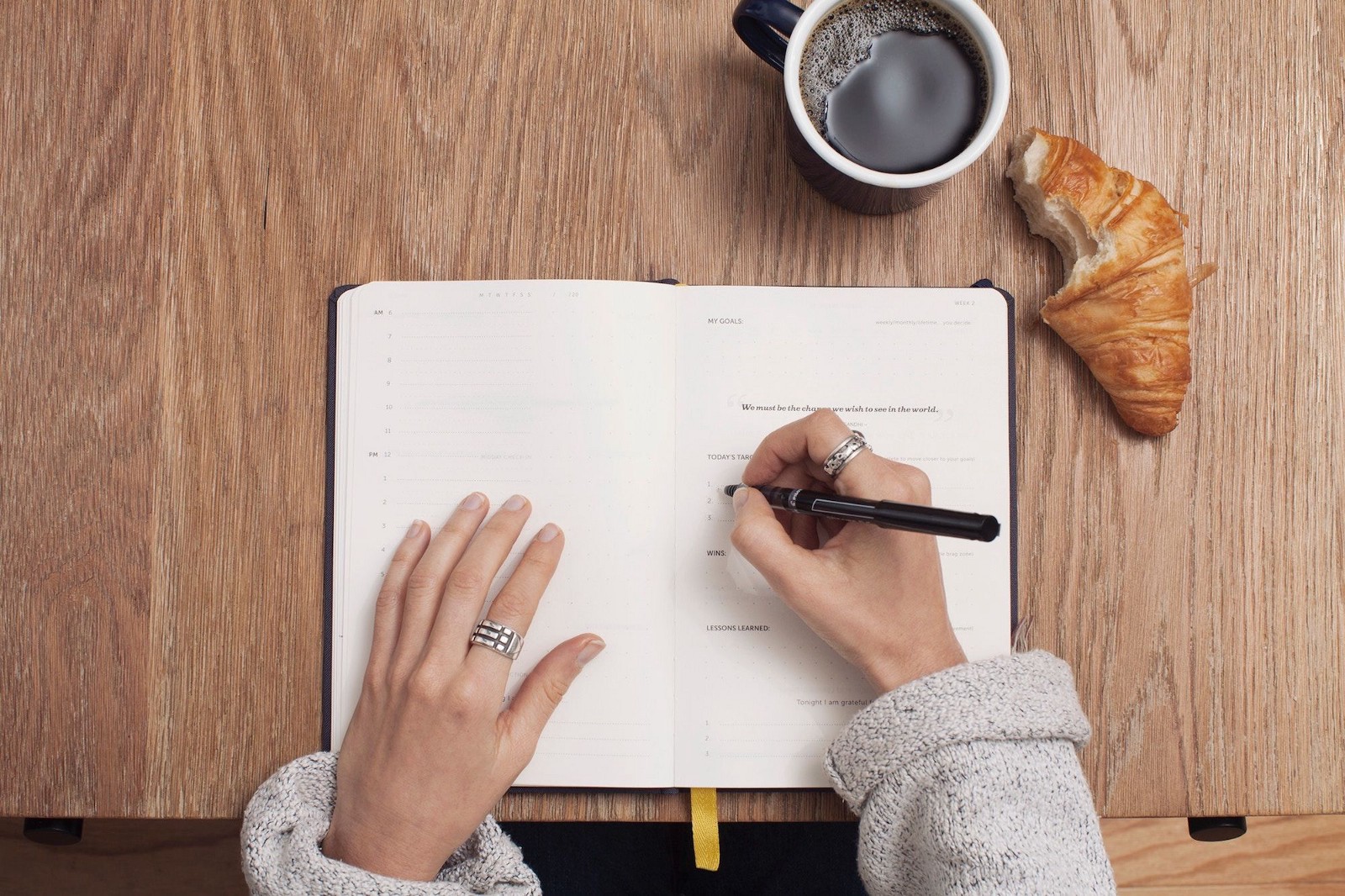Another day, another session with my morning pages.
I open AI Writer, start a fresh document, and begin my daily brain dump — at least three pages of undisturbed, stream-of-consciousness-style writing, where I unload all of my ideas, questions, thoughts, or concerns.
Morning pages are a stalwart of my routine. I do them as soon as I arrive at our Jotform headquarters. The process clears my head and leverages the crisp, uncluttered state of mind I have right after a workout. They also prompt my best creative thinking.
But lately, I’ve been wondering whether I should take my practice analog — or at least do some writing by hand. Because, according to experts, handwriting provides a range of benefits, from boosting creativity to enhancing memory formation.
“There’s a myth that in the era of computers we don’t need handwriting,” says University of Washington professor Virginia Berninger.
“That’s not what our research is showing. What we found was that children until about grade six were writing more words, writing faster, and expressing more ideas if they could use handwriting — printing or cursive — than if they used the keyboard.”
Handwriting is beneficial for adult brains, too, making it an analog activity worth holding onto (pun intended).
As our lives become increasingly digitized, it may be tricky to reintroduce handwriting, but using an old-fashioned paper planner is an easy way to start. You can reap the benefits of handwriting with the added bonus of organizing your life.
To help get you started, I’m sharing some simple ways to kick off your planning habit. But first, an overview of what we can gain by going analog.
Why pick up the pen?
Disclaimer: I’m just as attached to my smartphone as the next person. But I often feel a pang of nostalgia when I go for a walk and see people of all ages glued to their screens. I long for the days before devices dominated our every waking hour. That’s just one reason why I do adigital sabbathday on the weekend.
Using a paper planner can also provide a daily reprieve from devices. Without alerts, notifications, and tempting web browsers, we’re less distracted and can focus better on the task at hand (again, pun intended).
“[W]riting by hand forces you to slow down and approach your planning with more mindfulness,”saysjournalist andGet Moneyauthor Kristin Wong.
“Research even suggests that writing things down by hand helps you retain information better, which is a useful perk if you really don’t want to forget that important work deadline.”
In a time when school curriculums are increasingly focused onkeyboard proficiency, it turns out that handwriting positively impacts our learning ability.
Psychologists have foundthat college students learn better when they take notes by hand rather than typing them, because handwriting forces students to process the lecture and reframe it, which can lead to better understanding and memory encoding.
So when we reflect on the day, week, or month, planning by hand may help us to better organize our thoughts and goals. Not to mention, we’re more likely to remember those appointments.
Writing by hand also boosts creativity, as shown by Professor Virginia Berninger’s studieswith children, who produced more ideas after composing text by hand as opposed to typing on a keyboard.
Ona more practical note, many peopleprefer paper planners as a way to keep everything in one place, instead of bouncing from app to app. I’m a big advocate of doing one thing at a time, so any habit that reduces multitasking is a step in the right direction.
Fast Companycontributor Shane Snow writes that when he started using a weekly planner, “it forced me to think about my priorities a whole week in advance (rather than just day by day), which made me schedule out those work blocks a little more intentionally.”
With a finite amount of space within which to work, combined with the ability to visualize days and weeks ahead, you might find that using a planner helps you toprioritize.
How to get started
An analog planner is a great way to kickstart to a writing routine. Or, if you already have a ritual (like morning pages) a planning habit is an easy, low-maintenance step to add. Not to mention, you can stop searching for the latest and greatest scheduling app.
As writer CM Smith sharedwith LifeHack:
“My travels through the sea of endless list-making apps led me back to where I started my journey with productivity and Getting Things Done: pen and paper.”
But, as any seasoned planner will tell you, the physical options are endless. From simple calendars to customizable notebooks with inserts, there are so many products suited to a wide range of planning goals.
I’m all about making people’s lives easier. In fact, that’s why I started Jotform — a source for user-friendly online forms that meet a huge variety of customer needs.
If you’re ready to put pen to paper, here are some guidelines to help you choose the best planner for you, based on your goals and interests.
1. Bullet journal
You want:an organized methodology for planning your days, weeks, and months, with room to add journal notes.
Try:Leuchtturm 1917 Bullet Journal
The details: Bullet journaling uses rapid logging — short, bulleted sentences with symbols to represent different categories (tasks, events, notes, etc.). The Bullet Journal even has a Companion App, so you can continue your planning streak even if you forget your journal.
Pro Tip
WritesRyder Carroll, creator of the Bullet Journal: “I like to describe the Bullet Journal Method as an empty house. I gave the community this house to fill it with their own lives. That’s the key, to furnish your space with the things that serve you.”
“If you’re ever feeling stuck, unmotivated, overwhelmed, or simply out of touch with your journal, go back to the basics. Take a step back. Begin by remembering why you started.”
2. Traveler’s notebook
You want:a versatile, customizable notebook for planning and journaling, with room to add some artistic flair.
The details:a traveler’s notebook is a fully customizable notebook with a sturdy leather cover that looks better as it ages. You can add a monthly, weekly, or daily planner, and give it a personal touch with optional accessories.
Pro Tip
If you’re a scrapbooker, then you’ll love flexing your crafty, creative muscles with this planner. Find inspiration using the hashtag:#midoritravelersnotebook
3. Monthly planner
You want: a bare-bones, low commitment planner that you’ll stick with, including just enough room to jot down appointments, deadlines, and a few notes.
The details: made with recycled paper, this minimalist monthly planner is slim, inexpensive, and functional — a beginner-friendly way to start analog planning. The calendar is unmarked, so you can fill in the months and dates as you go along.
Pro Tip
If scheduling is your main goal, then this planner is your best bet.
4. Goal planner
You want: a place to flesh out short- and long-term goals, plus accountability to help you reach them.
Try:Panda Planner
The details:this planner includes prompts to get you thinking about a variety of goal-related questions: daily priorities, habits and focuses; upcoming projects and steps; and distractions you hope to avoid.
Pro Tip
Studies show that writing down your goals makes them much more likely to happen. A Panda Planner commits your goals to paper, and the built-in prompts help you assess (and reassess) your goals and progress.
5. Coloring planner
You want:an artistic way to plan
Try: Action Agendas Coloring Planner
The details: a coloring planner provides space for organizing, plus coloring pages to add some creativity to your morning routine.
Pro Tip
Coloring has been shown toreduce anxiety, stress and depressive symptoms in adults. So sharpen those pencils and color away.
Embrace ‘Digital Minimalism’
I love finding new apps to increase my productivity. If I can spend less time on logistical activities and more time on meaningful work, then I consider that a ‘win.’
That said, I also embrace the idea of digital minimalism.
As Cal Newport, deep work expert and author of theNew York Times bestseller Digital Minimalism,explains:
“Digital minimalism applies this same philosophy to your digital life: focus your time spent online on things that return huge value, and happily miss out on all the small little apps and services that offer you only minor conveniences or diversions. It’s not about being a luddite, but instead getting much more out of your tech.”
Without writing off the digital world entirely, using a paper planner is a great way to eliminate some of those low-value apps, while reaping the benefits of handwriting — not to mention mapping out your life in the process.
























































Send Comment: